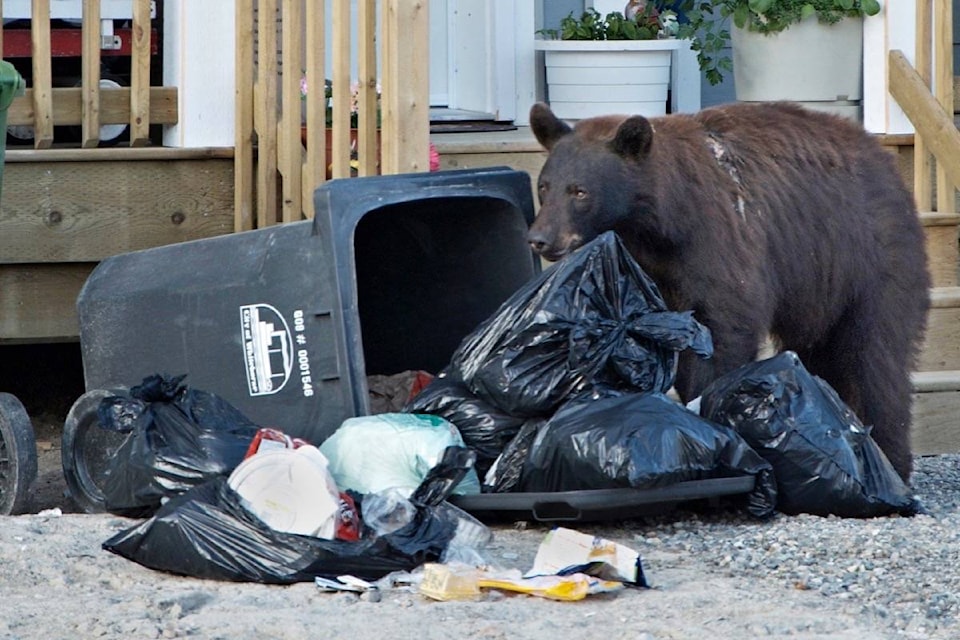By Rhiannon Russell
Despite a strong berry crop in the Dawson City area this summer, 13 bears have been killed by conservation officers and residents in defence of their life or property so far this season.
It’s a record number of human-bear conflicts in the region, said conservation officer Aaron Koss-Young.
“Officers have been going for two months straight with nothing but bear conflicts and they report that there is a good berry crop this year, yet the bears continue to seek out human food attractants,” he said.
In many cases, the attractants have been chickens. “We’re seeing an increase in poultry production… and people aren’t investing in electric fencing at the onset of their operations.”
This season has seen an unusually high number of bear deaths across the territory. To date, 48 have been killed. The record number is 61 in 2012.
“The bears are certainly food-stressed more than usual this year and that can be a result of the weather that we had this summer,” said Koss-Young. Some parts of the territory, such as the Whitehorse area, have seen a poor berry crop, which means bears are seeking out alternate food sources.
When attractants like livestock, bird seed, and pet food aren’t properly stored, they can prove enticing to bears. In the subdivisions around Whitehorse, Koss-Young said, about one in three homes have chickens, pigs, or goats.
“If a bear comes across a chicken coop, it’s almost irresistible: the clucking noises and the smell… and they’re easy to catch.”
Across the Yukon’s other districts, at least seven bears have been killed in Mayo, five in Carmacks, 10 in Whitehorse, three in Teslin, five in Watson Lake, two in Faro, and one in Old Crow.
In Faro last month, conservation officers relocated two or three bears outside the community, said chief administrative officer Ian Dunlop.
Several bears passed through the town in mid-July, during peak berry season, he said. People would spot them from the windows of their homes or while out walking their dogs.
Word spreads quickly throughout town, typically on social media, when there’s a bear in the area, Dunlop said. Residents are cautious about letting their children play outdoors.
Because the bears usually seek out well-vegetated corridors through the community, Dunlop said town staff trimmed some brush in an attempt to make these areas less attractive to bears.
“That seems to have helped open things up and even if it doesn’t deter the bears, at least now we can see them more clearly so that avoids getting a surprise if you’re walking through the bushes,” he said.
Faro’s large community garbage collection units — where residents dispose of their trash — are also bearproof. Since last year, the town has upgraded the electric fence around its landfill. Previously, it ran on solar battery power and that wasn’t effective enough. Three bears got into the dump last year and had to be shot.
Now, the fence runs on the town’s main power supply. There haven’t been any problems with bears there this year, Dunlop said.
It’s part of WildWise Yukon’s strategic plan to expand out into the communities, said executive director Heather Ashthorn. The group has already gone door-to-door in the Southern Lakes region, talking to residents and surveying properties for attractants. That two-year project was well-received, so this year, WildWise went to Carmacks to do the same thing.
“There’s a lot of engaging in conversation through storytelling,” Ashthorn said of the time spent there. “People love to share their bear stories and that’s really helpful for us just to create some context in terms of how humans are living with bears and in terms of attractant management.”
The organization is also working with the Carcross/Tagish First Nation (CTFN), after the First Nation raised concerns about human-bear conflict in the area, particularly with regard to how tourists interact with bears when driving along the South Klondike Highway.
Together with CTFN, the Carcross/Tagish Renewable Resources Council, and Environment Yukon, WildWise released a brochure and put up signs along the highway, asking motorists not to feed bears or stop on the side of the road to look at them.
Ashthorn described the work WildWise is doing in the region as research.
“We’re trying to understand why the problem exists by going out there and talking to people, and asking them to report when they’re seeing people approaching bears or slowing down and stopping on the shoulder to view them and engaging in behaviours that are unsafe for humans and for bears,” she said.
When it comes to what local residents can do, though, to protect against bear conflict on their properties, it’s a common refrain: properly secure attractants.
One notable example Ashthorn mentioned is that several years ago, Carcross overhauled its waste management system, replacing bins with Haul-All bearproof containers placed at the end of most streets.
Once bears access human food sources, it’s game over, said Koss-Young.
“There’s just no hope to translocate them or do anything with them. They have to be euthanized because they become very aggressive in protecting that very high-calorie food source.”
It’s something conservation officers have said countless times. But some people are resistant to the idea that they should have to make an effort to bear-proof their property, he said. “In the end, it’s always the bear that suffers.”
A subsidy for electric fencing is available through the Canada-Yukon Growing Forward 2 program, he added.
As for this year’s lengthy list of bear casualties, Koss-Young said he doesn’t see any sign of things slowing down soon.
Contact Yukon News at editor@yukon-news.com
